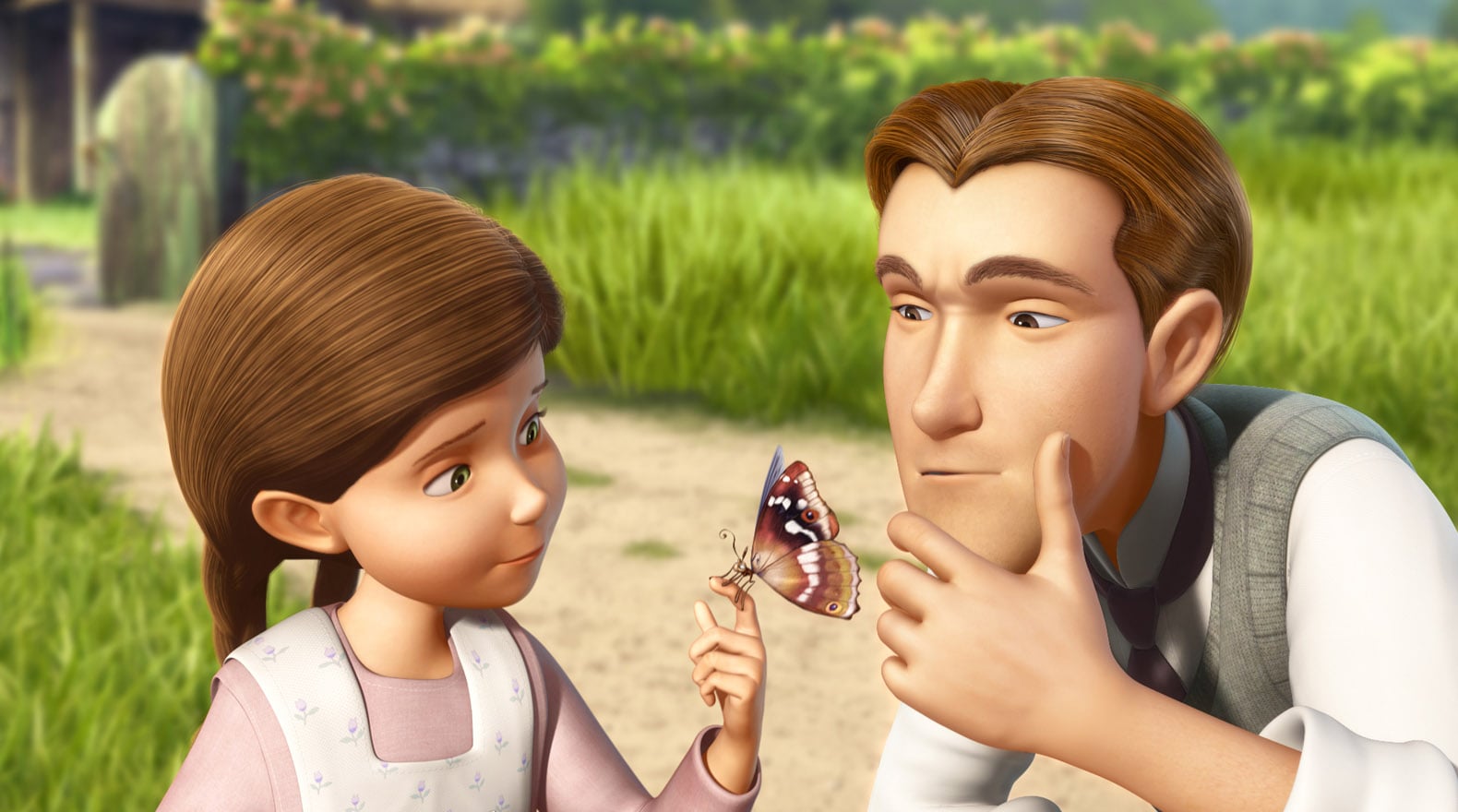Tinker Bell and the Great Fairy Rescue (2010) is the third movie in the Disney Fairies series. It follows the adventures of Tinker Bell (of Peter Pan fame) and her fairy friends on their summer sojourn in the human world.
As the fairies do not reproduce but are born of a baby’s first laugh, one would not expect the series to touch on family matters. However, by venturing among humans, the fairies have an opportunity to encounter a family.
In Tinker Bell’s world, the fairies each have a part to play in changing the seasons. Garden fairies help the plants grow; animal fairies tend to the creatures, painting the wings of ladybirds and butterflies; water fairies attend to aquatic duties; light fairies form rainbows and illuminate fireflies; fast-flying fairies bring forth breezes among the trees; and tinker fairies create contraptions that assist the other fairies in performing their tasks.
A Whole New World
Tinker Bell (voiced by Mae Whitman), an inquisitive, inventive tinker fairy, excitedly embarks on her exploration of the “mainland”. She sees an automobile for the first time, chugging along the road. The driver is entomologist Dr Griffiths (voiced by Michael Sheen), bringing his beloved 9-year-old daughter Lizzy (voiced by Lauren Mote) on their summer holiday.
Lizzy is overjoyed to return to their summer holiday home in the countryside, a picturesque thatched cottage. “Father, Father, Father! Can we bring our tea and scones outside and have them here in the garden? It would be just like a little picnic,” she smiles delightedly.
“Not just now, Lizzy. I still have to get the trunk unpacked and the house settled,” Dr Griffiths replies.
Espying a butterfly with paint spatters on its wing, Lizzy chatters excitedly about fairy painters, which her scientist father brushes off as imaginative nonsense, exclaiming over this rare mutation which he intends to show off to museum trustees back in London, that he may obtain a curatorship.
“You’re going back already? We just got here,” Lizzy sighs.
“I know, sweetheart, and I’m very sorry. But I’ll only be gone for the day. Mrs Perkins will look after you, and I’ll be back in time to tuck you in,” her father reassures her.
Accidental Exploits
Fairies are not meant to make contact with humans, but Tinker Bell inadvertently finds herself in strife after her curiosity leads her into a fairy house lovingly constructed by Lizzy. Lizzy is over the moon upon finding a real live fairy in her domain and rushes to her father’s study to show him her find.
However, upon realising that her father might add Tinker Bell to his collection of desiccated butterfly specimens, Lizzy keeps her discovery to herself and hides Tinker Bell in her bedroom. Meanwhile, the fast-flying fairy Vidia dashes back to the fairy camp, alerting the others to Tinker Bell’s predicament and rallying them to save her from the humans.
Blossoming Friendship
At first, Tinker Bell is afraid and tries to escape from Lizzy’s room. But it is raining, so she cannot fly back to camp. Lizzy comforts and befriends her. Tinker Bell begins to teach her about the fairy realm, and together they fill up a field journal that Lizzy’s father has given her in the hope that she would pursue more scientific endeavours. Lizzy tops it off with a meticulous pop-up diorama of the fairies’ home, Pixie Hollow.
Lizzy proudly brings her completed journal to show her father, but he is too busy saving his work from the leaks which have sprung in the roof. “I don’t have time,” he snaps distractedly, hastily placing containers beneath the trickling water. “Maybe later.”
“You always say that!” Lizzy cries sadly, returning to her room.
Parenting Problems
Later, when Dr Griffiths finally shows up to inspect the journal, he finds Lizzy fast asleep. “There just aren’t enough hours in the day,” he sighs, heading to bed.
Tinker Bell witnesses this exchange and decides to stop the leaks while the household is asleep, so that her new friend may have more time together with her father.
Indeed, true friends strengthen a good family’s bonds, honouring the irreplaceable role of those within the family. Tinker Bell models the virtues of a good friend, employing her talents in the service of Lizzy’s dearest wish — to actually spend her holiday with her father.
The rest of the movie follows the hair-raising efforts of the fairies to locate Tinker Bell, alongside how she helps to restore Lizzy’s relationship with her father, who has to juggle work and parenting as a single dad. It provides food for thought about one’s competing priorities, as well as how parents may foist their own interests and expectations upon a child.
Tinker Bell and the Great Fairy Rescue is a lovely film for the young and young-at-heart, with plenty of gentle humour and splendid illustrations to keep all viewers entertained. It is 74 minutes long and rated G by the Australian Council on Children and the Media.



